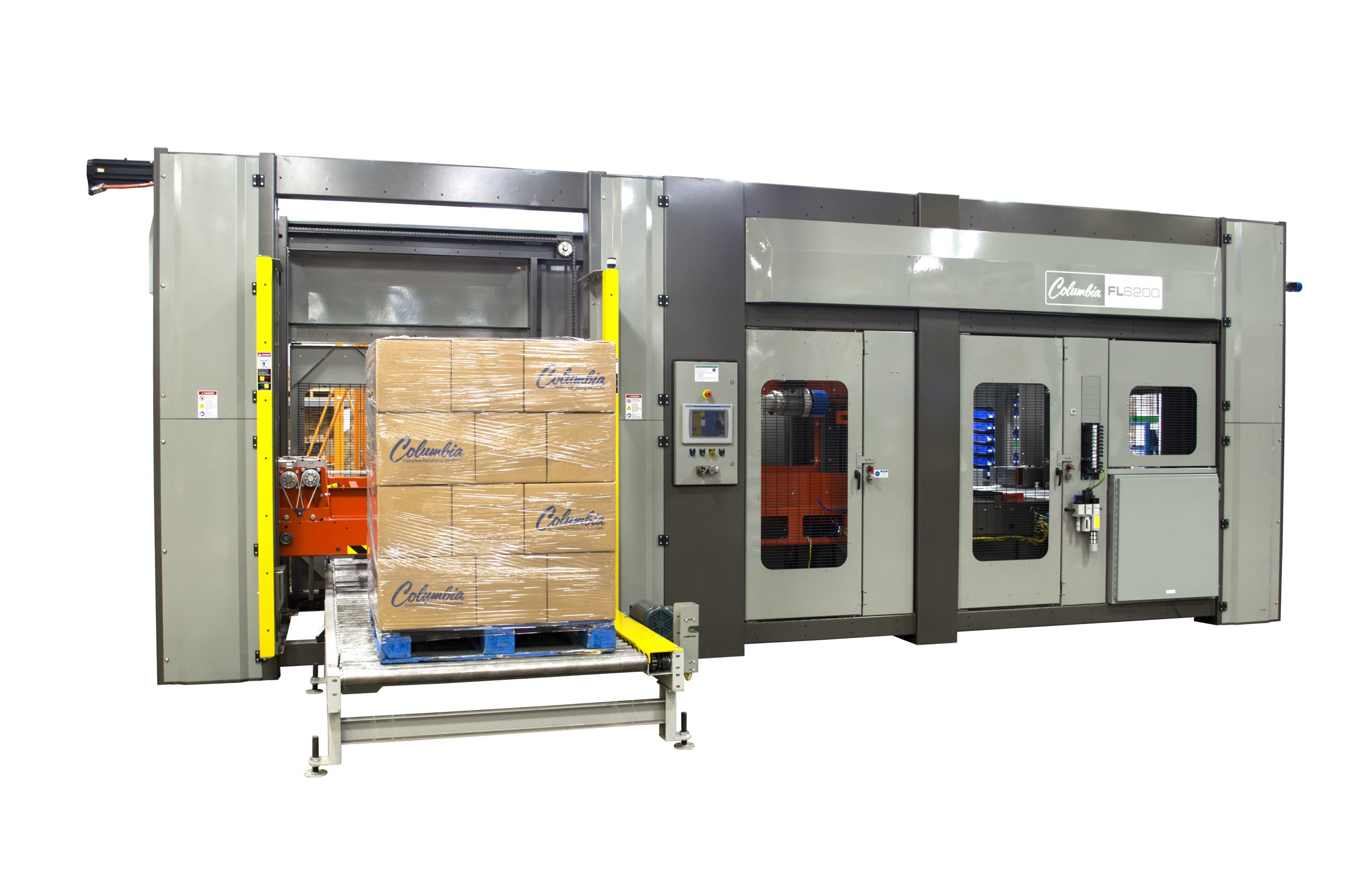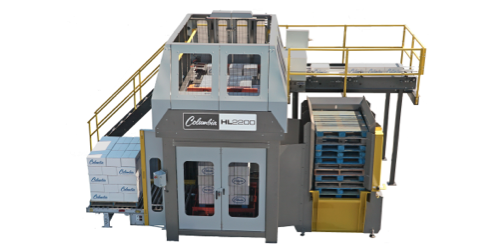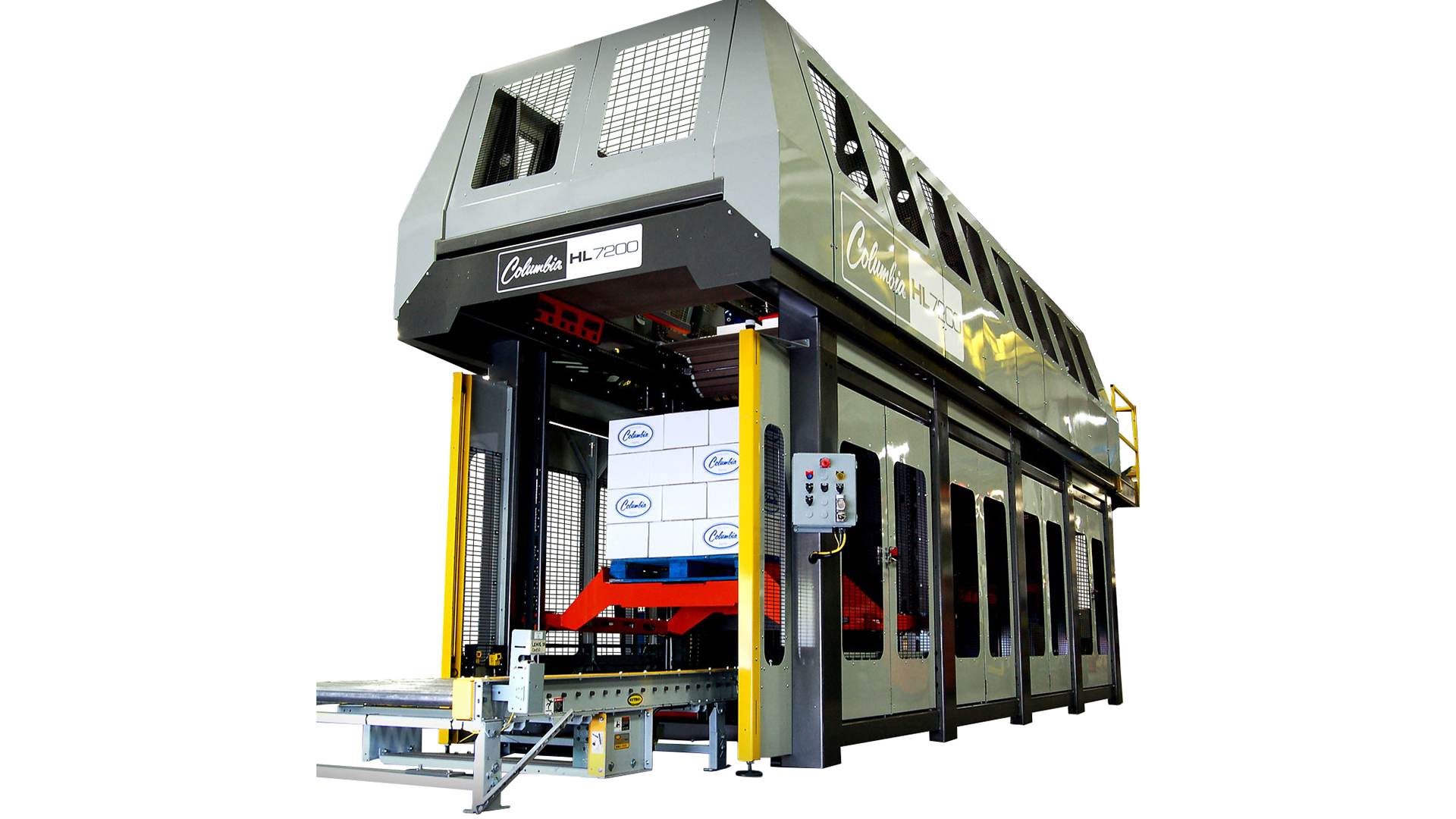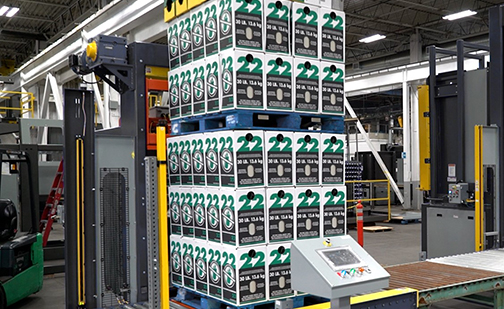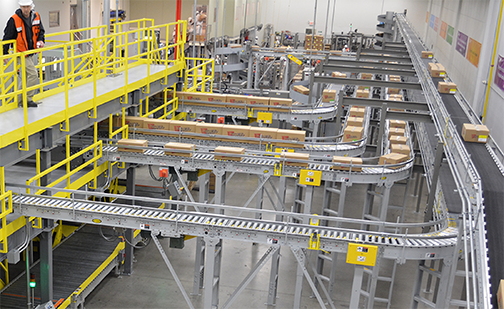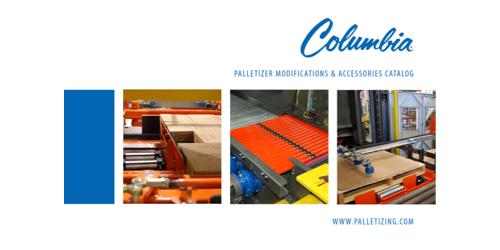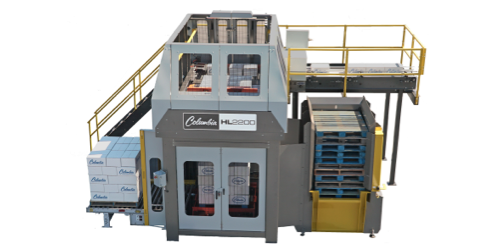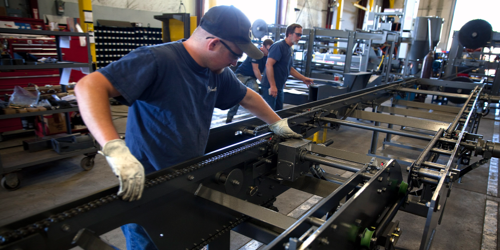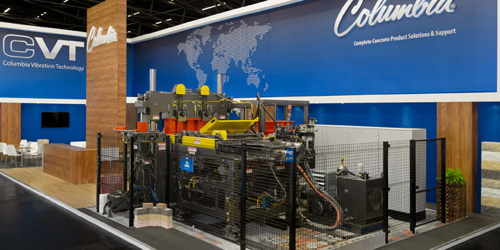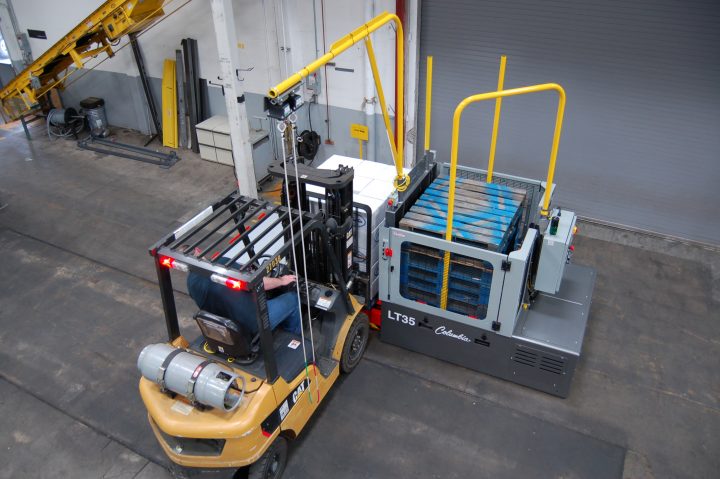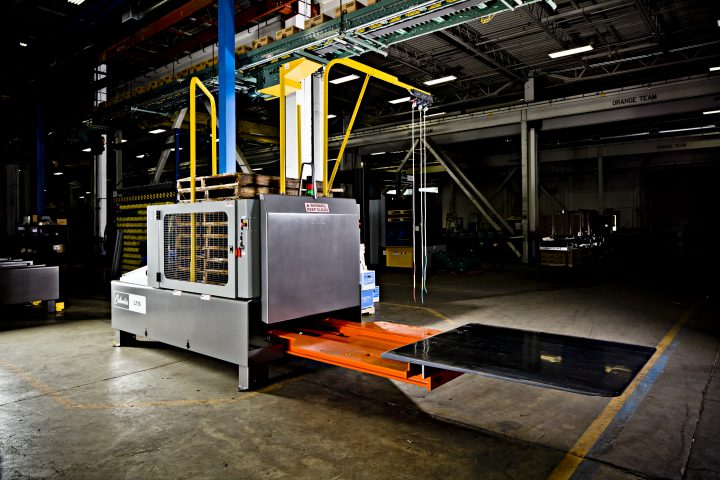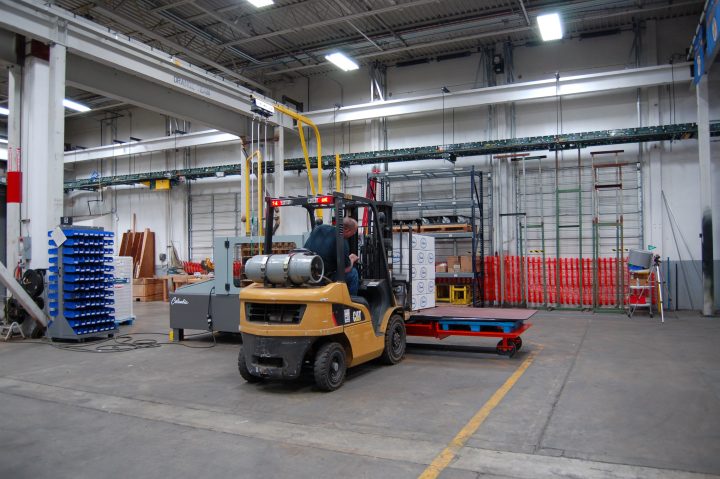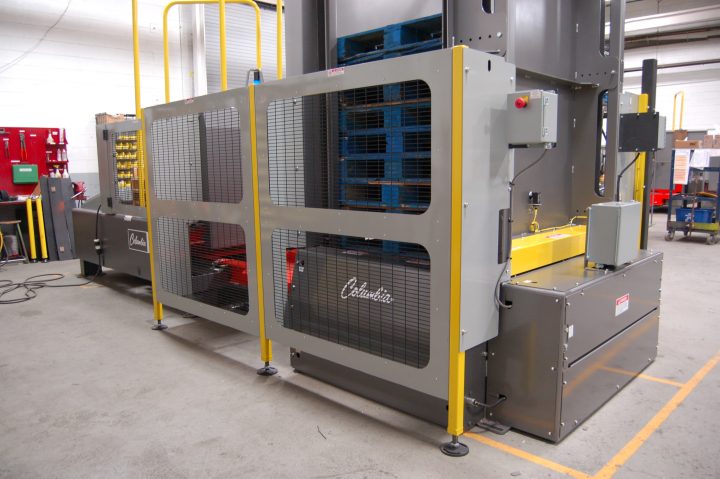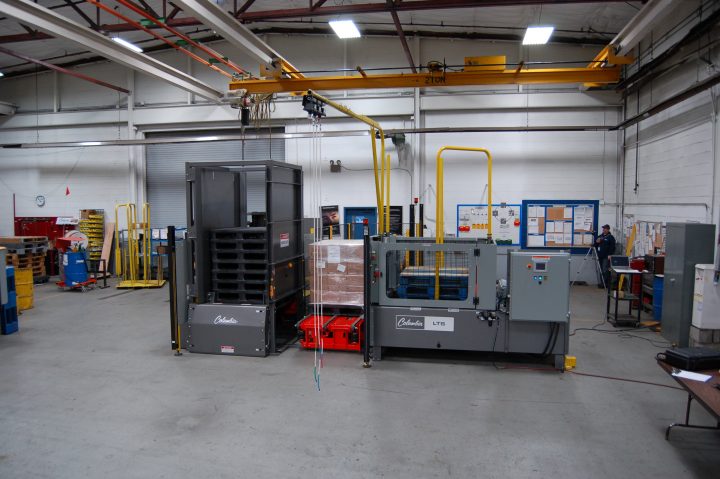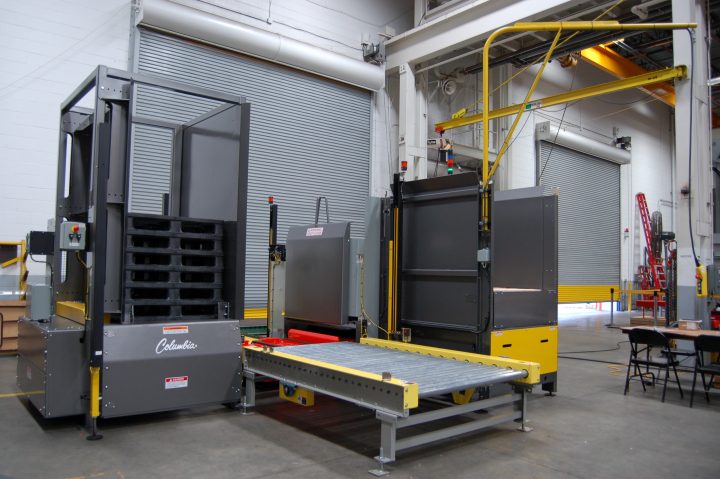Load Transfer Stations
Columbia Load Transfer Stations are designed with safety and efficiency in mind. The cycle time of the transfer process is approximately 60 seconds and eliminates the need for manual pallet handling.
Innovation driven by:
Safety
Industry-leading Category 3 safety package is one of many ways Columbia safeguards your team, making sure every day is safe and productive.
Speed
Safer, cleaner and faster than other load transfer devices.
Compliance
Helps meet FSMA, HACCP and GMP compliance.
What Is A Load Transfer Station?
Load Transfer Stations are capable of transferring products that are packaged in cases, barrels, drums, bags and pails from one pallet to another including Plastic, Chep and GMA pallets in both receiving and shipping applications.
Columbia's Load Transfer Stations (LTS) optimize your facility's lift truck productivity, reduce labor and shipping costs, help reduce contamination from entering production areas, and help prevent injuries. Load Transfer Stations have proven to be safer & faster than load inverters.
Load Transfer Stations FAQs
A Load Transfer Station safely and gently transfers loads from one type of pallet to another. This can be from one style of pallet to another, pallet to slip sheet, pallet to pallet board or in-house pallet and more.
A Load Transfer Station can help minimize repetitive motion workplace injuries, aid in GMP, HACCP, FSMA compliance and help reduce shipping costs.
Load Transfer Station gently slides a "Go From" pallet out from under a load and leave the load being transferred on a steel transfer plate. The steel transfer plate pulls out from under the load and gently places the load on to a new load base.
Load Transfer Stations are either semi automatic or fully automatic. A semi automatic version uses a fork lift to bring loads to be transferred to the machine and take transferred loads away. The transfer process itself is automatic. More advanced systems can be equipped with features that allow loads to automatically convey into the LTS and convey out of the LTS, once the transfer is complete. The size of the machine depends on the level of automation desired.
By eliminating manual labor often used to transfer loads, a Columbia Load Transfer Station can transfer a load in less than 60 seconds.
The biggest maintenance item on a Load Transfer Station is the daily cleaning of wood debris often found with used pallets. Periodic checking of hydraulic fluid level and condition is recommended.
All Columbia Load Transfer Stations include Category III safety components and wiring methodology.
There are simple semi automatic Load Transfer Stations that require the use of a fork lift to bring loads to be transferred to the machine and take transferred loads away. The transfer process itself is automatic. More advanced systems can be equipped with features that allow loads to automatically convey into the LTS and convey out of the LTS, once the transfer is complete.
Load Transfer Stations use standard components that are custom configured to meet the unique needs of every application. There are countless layout configurations available depending on the facility layout and level of automation desired as well as the variety of Go From and Go To pallets.
The type of go from and go to load bases are the single biggest factors in choosing a Load Transfer Station. Next, would be the level of automation desired.
Safety And Efficiency
Are Our Top Priorities
We design our Load Transfer Stations with safety and efficiency as our top priorities. Each of our LTS models allows the operator to stay in the forklift during machine operation, eliminating the need for manual pallet handling.

